Stories are not necessarily posted in order from the top. Please scroll down to see more recently posted articles.
States struggle with deficits, keep farmland preservation afloat
BY DEBORAH BOWERS, Editor & Publisher
This story has been updated with a preserved acreage table for state programs.

MD Gov. Martin O'Malley gives his State of the State address (Photo by Karl Merton Ferron, Baltimore Sun)
While states struggle with deficits by cutting spending and raising taxes, the nation’s busiest farmland preservation programs, those in Pennsylvania, Maryland, and New Jersey, managed to preserve 31,172 acres in 2010. Pennsylvania’s farmland program was the leader, approving 15,939 acres for preservation during the year, and in Maryland, 8,289 acres were settled on, and 396 acres were pending settlement in January. New Jersey state and local-level programs, not including nonprofits, preserved 6,548 acres. Settlements in Pennsylvania will occur over the next 18 months. The Pa. program does not re-tally acres after settlement. (See acreage table below for other programs.)
Farmland preservation persists in these states due to a combination of dedicated funding streams and political commitment to what are now longstanding and popular programs.

NJ Gov. Chris Christie (Associated Press photo)
Yet in New Jersey, where 189,000 acres are preserved to date, state funding that has always come by way of bond referenda is in a holding pattern. Voters approved a referendum last fall that called for continued borrowing for farmland and open space preservation. But the legislature has yet to appropriate funds for debt service, said Andrew Pratt, communications director for the New Jersey Treasury, and so no bond sales for farmland preservation have been scheduled.
While the FY12 budget is up for discussion in the NJ legislature, conservationists are busy trying to convince lawmakers that now is not a good time to block farmland and open space funding.
According to New Jersey Conservation Foundation executive director Michelle Byers, open space preservation in New Jersey has become a part of the economy that creates jobs and attracts companies.
At the Foundation’s 50th anniversary last fall, five former governors spoke on New Jersey’s commitment to protecting natural resources and stated their hope that current Gov. Chris Christie will build on that record rather than weaken it. Byers recently noted that Gov. Christie didn’t mention the environment in his State of the State address, where he had to focus on New Jersey’s $10.5 billion deficit.
Farmland preservation in New Jersey has bright spots despite deficits and uncertain funding. Last month a 519-acre farm in Cumberland County, in “South Jersey,” was preserved, the largest farm preserved in that county to date.
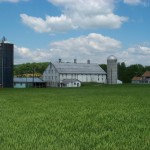
Adams County Pa. dairy farm
In Pennsylvania, farmland preservation continues to reap big numbers of acres with its dedicated funding and popularity at the state and local levels. The farmland program is earmarked for $20.5 million per year from the state cigarette tax, as well as 14.8 percent of the state’s Environmental Stewardship Fund. Well operated local programs throughout the southeastern section of the state that put up significant funding matches are also key to the program’s success. The funding has kept Pennsylvania on top, now with 444,647 acres preserved to date by the state farmland preservation board. Final documentation and settlement is completed by counties.
Farmland preservation in Maryland has slowed with drastic diversion of its dedicated revenue source over the last four years. Gov. Martin O’Malley however has kept land preservation programs afloat, making use of the state’s AAA bond rating. Maryland is one of only eight states given the coveted rating by all three major rating agencies. A finance plan that shifts most of the program’s dedicated real estate transfer tax revenue to the general fund and partially replaces it with bond money is now in its fourth year. In the fiscal year 2012 budget $19.6 million in transfer tax revenue is diverted to the state general fund and $4.4 million ‘backfilled’ with bond money.
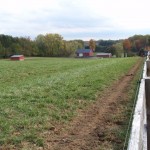
Preserved farm, Harford County (FPR photo)
According to Andrew Gray of the Dept. of Legislative Information Services, the MALPF program is slated for $8.6 million for FY 2012 – $4.4 million in general obligation bonds and $4.2 million in special funds, or real estate transfer tax revenues. Declining transfer tax revenues required increased borrowed funds being used for MALPF. Gov. O’Malley’s budget, as sent to the General Assembly for approval, also includes $4.5 million for the Rural Legacy Program, a grants program for land trusts and local governments allowing for easements and fee purchases on both farm and natural lands. The great majority of activity is in easements.
The MALPF purchase of development rights program is significantly boosted by Maryland’s independently operated county programs, the strongest currently being those in Carroll, Baltimore and Montgomery Counties. Acres preserved by county programs in Maryland are substantial but are not counted in MALPF’s acreage tally.
Carroll County allocated $17 million in 2009 to boost farmland preservation, and the money was matched administratively with innovative finance. The installment purchase program structured by administrator Jeff Everett was coveted recently by the New Hampshire Land and Community Heritage Investment Program (L-CHIP) in which farmland preservation has been a minor focus over the last 20 years. According to Everett, legislation is being prepared to enable the NH program to adopt installment purchase as a means toward rejuvenating farmland preservation in the state.
In 2010, Carroll County preserved more acres than any other locally operated program surveyed by FPR – 3,561 acres settled, and 2,232 acres since the start of FY 2011. Carroll’s program has preserved about 56,000 acres to date, excluding Rural Legacy Program acres, which add more than 5,000 acres.
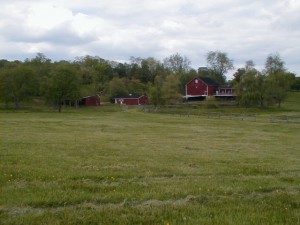
Baltimore County Rural Legacy Area farm (FPR photo)
Baltimore County in recent years has borrowed funds for farmland preservation and handed much of the work over to local land trusts that are top award-getters in the state Rural Legacy Program. Two land trusts in Baltimore County each received Rural Legacy grants of $1 million in 2010. The county often matches the state funds those land trusts receive. Baltimore County is highly urbanized, but its strong planning and land use regulation in its northern region has made purchase of development rights viable, affordable and attractive to landowners over the last 30 years. The county to date has preserved nearly 27,000 acres, and those purchased-easement acres are matched by an equal number of acres in donated easements to the Maryland Environmental Trust, for a total of 52,156 acres preserved in Baltimore County in FPR’s Sept. 2010 survey.
Montgomery County, while nearing “build out” in its preservation zone, is reinventing its preservation programs. A new program, designed to retire development potential that remained after the county’s renowned transfer of development rights played out, should have its first purchase period this year. The Building Lot Termination (BLT) program will buy up building lots remaining from the TDR program’s residual 1:25 density. Valuation is the last aspect to be ironed out, according to program manager John Zawitoski.
The farmland preservation program in Delaware is close to those in neighboring states in more than just geography. Delaware recently passed the 100,000-acre milestone, and the program’s ‘state of the state’ is brightened by farmers routinely giving deep discounts to get into the top of the application heap. Discounts average 51 percent below appraised easement value. That level of discounting is not found in any other state PDR program, yet it is sure to be an aspect lost in the shuffle at budget decision time.
The DE Department of Agriculture has requested $6 million for farmland preservation, more than twice the program’s 2011 budget, said program director Mike McGrath. The department would also like to fund a new program similar to critical farms programs in Maryland, which focus on helping farmers buy land that in many cases is threatened with development. The department has asked $2 million for that program, but like in other states, money is tight in Delaware. Gov. Jack Markell endorsed both budget requests when they were made, but cutting is the name of the game, no matter if you once served on the farmland preservation state board. Markell has proposed cutting the entire farmland budget.
States with farmland preservation programs, showing FY12 projected deficit and deficit as percent of FY11 budget
(Source for figures: Center on Budget and Policy Priorities)
Colorado / $988 million / 13.8%
Connecticut /$3.7 billion /20.8%
Maine / $436 million / 16.1%
Maryland /$1.6 billion /12.2%
Massachusetts /$1.8 billion /5.7%
Michigan /$1.8 billion /8.6%
New Jersey /$10.5 billion /37.4%
New Mexico /$410 million /7.6%
New York / $9.0 billion /16.9%
North Carolina /$3.8 billion /20.0%
Ohio /$3.0 billion /11.0%
Pennsylvania /$4.5 billion /17.8%
Rhode Island /$290 million /9.9%
Vermont /$150 million /13.9%
Virginia/ $2.3 billion 14.8%
Washington /$2.9 billion /18.5%
West Virginia /$155 million /4.1%
Wisconsin / $1.8 billion / 12.8%
Selected programs with acres preserved in 2010 and total to date
| State | Acres Preserved in 2010* | No. farms Preserved, 2010 | Total Acres to Date | Total Farms to Date |
| Delaware |
5,429 |
57 |
100,000 |
630 |
| Connecticut |
1,371 |
16 |
37,262 |
283 |
| Massachusetts |
1,905 |
26 |
66,016 | 790 |
| Maryland |
8,289 |
n/a |
283,527 |
2,080 |
| Michigan |
0 |
0 |
21,606 |
106 |
| New Jersey |
6,548 |
n/a |
189,000 |
1,988 |
| New York |
6,700 |
11 |
39,656 |
181 |
| North Carolina |
n/a |
n/a |
4,608 |
22 |
| Pennsylvania |
15,939 |
168 |
444,647 |
4,096 |
| Vermont |
4,692 |
28 |
134,000 |
520 |
| Virginia |
2,520 |
18 |
4,084 |
28 |
| West Virginia | 2,675 | 18 | 13,150 | 106 |
*Acreage totals differ in administration, such as, NJ total includes projects in which townships or counties were the lead agency; this is not true for Maryland, in which the total represents work performed only by state-level staff, and only by MALPF, excluding Rural Legacy Program which is administered by DNR. In Virginia, most funding provided by localities. Pa. figure for 2010 reflects acres approved for preservation and not yet settled.Source: FPR inquiries to each state.
|
||||
Funding in doubt for New Mexico program created one year ago
BY DEBORAH BOWERS
SANTA FE, NM – When former New Mexico Gov. Bill Richardson last March signed into law the Natural Heritage Conservation Act to award grants for conservation easements, the legislation provided $5 million in initial funding. However, those funds have not materialized and the funding is in jeopardy due to the state’s $410 million deficit, according to Jody Porter, spokesperson for the NM Department of Energy, Minerals & Natural Resources (DEMNR).
“It’s in a holding pattern. We’re waiting to see what the legislature does,” Porter said.
According to Dan Ware of the Forestry Division, DEMNR, rules for the program are ready, even if the money isn’t.
“Even though we didn’t have funding appropriated in 2010, we prepared and adopted rules. We had a series of public hearings. Those rules are now in place so when we do get appropriations we’ll be able to implement the program that much faster,” Ware said.
New Mexico passed a land conservation tax credit in Jan. 2008 that allows a deduction of 50 percent of appraised easement value up to $250,000 per individual donor. The credit can be applied for up to 20 years. Also, like a land preservation tax credit in Virginia, credits are transferrable.
Lack of state funding will hamper agricultural land preservation in the state, much of which is carried out by the New Mexico Land Conservancy. About 85 percent of the 80,000-plus acres the organization protects are agricultural. The federal Farm and Ranchlands Protection Program (FRPP) would figure significantly into any funds the state provides.
California Williamson Act tax relief is on governor’s chopping block
BY DEBORAH BOWERS, Editor & Publisher
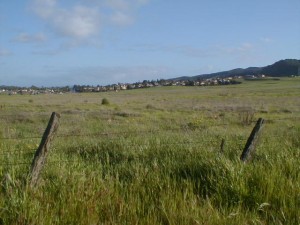
Ca. farmland next to towns could give way to development without Williamson Act tax breaks (FPR photo)
SACRAMENTO, CA – California’s counties are facing termination of reimbursements for the property tax breaks they give to farmers under the 45-year-old Williamson Act. Facing a $26 billion budget shortfall, Gov. Jerry Brown has proposed eliminating the reimbursements known as subvention payments to localities. Many counties cannot say whether they will be able to shoulder the often substantial amount of revenue they would forgo if they continue the tax breaks.
About 16 million acres are enrolled in Williamson Act contracts in 53 of 58 counties. The 10-year contract that prohibits development is automatically renewed. A program added in 1998 allows for an additional 35 percent reduction in property value for tax purposes under a 20-year contract that creates a Farmland Security Zone. In 2009, 23 counties had adopted the FSZ program and reported 20-year contracts covering 863,530 acres.
Troubles for the Williamson Act began in earnest in 2005 when the state legislative analyst recommended to lawmakers that they begin phasing out the program.
In 2009 counties claimed more than $35 million in subventions, but there would be no payments from the state. The largest claims came from Fresno County, at $5.2 million, Kern County at $4.6 million, Tulare County at $3.4 million, Kings Co. at $2.6 million and San Joaquin County, at $1.8 million.
Last month Fresno County officials decided to cover the costs of tax breaks for farmland by cutting personnel and other areas.
North Carolina governor vetoes bill that would have depleted Farmland Preservation Trust Fund
BY DEBORAH BOWERS
This story has been updated.
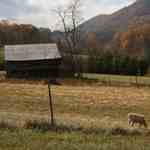
Buncombe Co NC (Photo by Anne Lancaster, CSREES)
RALEIGH, NC – North Carolina Gov. Bev Perdue Feb. 22 vetoed legislation passed Feb. 9 that would have depleted a number of trust funds, including the state’s Farmland Preservation Trust Fund. Perdue said the bill would have harmed job creation in the state.
SB13, the “Balanced Budget Act of 2011,” would have taken $1.8 million from the trust fund this year and transfer those funds to the state’s General Fund.
Brian Long, spokesperson for the Department of Agriculture and Consumer Services said the bill would have depleted the fund and canceled projects for the coming year. Soil and water conservation and CREP funds would also have been diverted.
CA Supreme Court rejects builders appeal on farmland mitigation case
 MODESTO, CA – The California Supreme Court will let stand a lower court ruling that Stanislaus County is within its authority to require developers to pay for farmland preservation one acre at a time – for each acre developed. The decision came Feb. 16 with much relief expressed by supporters of smart growth and farmland protection statewide who watched the case.
MODESTO, CA – The California Supreme Court will let stand a lower court ruling that Stanislaus County is within its authority to require developers to pay for farmland preservation one acre at a time – for each acre developed. The decision came Feb. 16 with much relief expressed by supporters of smart growth and farmland protection statewide who watched the case.
The Central California Building Industry Association prevailed early on, with a lower court judge ruling Stanislaus County’s mitigation program unconstitutional.
The mitigation program was established in 2007, and was not the first in the state. The court’s ruling relieves local governments of fears that the technique would invite an expensive legal challenge. Mitigation programs are expected to be enacted in other counties following the ruling.
“Cities should have no reservations anymore about putting this in (growth policies),” Tom Orvis, governmental affairs director for the Stanislaus County Farm Bureau, told the Modesto Bee. The Bureau supported the county in the case.
Upcoming Conferences
March 17-19, Chicago: FamilyFarmed EXPO is a three day gathering of Chicago-area fans of locally grown and responsibly produced food and artisanal goods. Features: our world-class Financing Farm to Fork conference connecting local food producers with potential investors; the Midwest’s leading local food trade show, our Meet the Buyers reception, an innovative Food Policy Summit, and the scrumptious Localicious Party; cooking demos from celebrity chefs, educational seminars and an interactive Kids Corner. Exhibitors offer a wide selection of local food, gifts and useful information to help you eat locally and healthy year-round.
March 26, Worcester, MA: The Massachusetts Land Conservation Conference is convened by The Trustees of Reservations’ Putnam Conservation Institute and the Massachusetts Land Trust Coalition, and co-sponsored by Mass Audubon, the Nature Conservancy, The Trust for Public Land, and the Land Trust Alliance.

Boston, site for upcoming APA conference
April 9 – 12, Boston, MA: 2011 National Planning Conference of the American Planning Association. Food system and rural planning among broad topic selections. See planning.org.
April 30, Middletown, CT: Connecticut Land Conservation Conference, The conference will offer 24 workshops; 8 each in one morning and two afternoon sessions. The workshops will be preceded by a keynote speaker in the morning. The workshops are generally about 1.5 hours in length, with up to 45 people, attending each. Both basic and advanced training will be available.
May 19-21, Harrisburg, PA: 9th Annual Pennsylvania Land Conservation Conference. Hosted by the Pennsylvania Land Trust Association, this conference is Pennsylvania’s annual training, networking and inspirational event for those involved with private and public land conservation.
May 31 – June 2, Charlottesville, VA: Virginia’s Land Conservation Conference, sponsored by the Piedmont Environmental Council. “Join land trust staff, PDR managers, volunteers, board members, public agency staff, and land conservation advocates to network with colleagues from across the state and learn about the latest advances in the practice of conservation.”
April 29 -30, Brunswick, ME: Maine Coast Heritage Trust presents the Maine Land Conservation Conference in support of its Maine Land Trust Network program and Maine’s land conservation community. The conference will take place on Friday, April 29th in Brunswick and Saturday, April 30th in Topsham. The conference provides training on best practices in land trust management, land transactions, and stewardship and a forum for learning about the most pressing issues facing land conservation today.
Food system plan released in Philadelphia
BY DEBORAH BOWERS, Editor & Publisher
PHILADELPHIA, PA – To build a working regional food system in the Philadelphia region will require improving access to land and capital for farmers, according to the Delaware Valley Regional Planning Commission (DVRPC) in a food system plan released Feb. 10. The release of the plan, which contains 52 recommendations for remaking how people can obtain whole nutritious food, was celebrated at the Reading Terminal Market, an historic farmers market in downtown Philadelphia. The recommendations run the gamut of minor policy changes to major legal changes and taking on comprehensive community-based projects.
The report is the culmination of two years of research and stakeholder meetings convened by the DVRPC to examine the region’s foodshed, which the report defines as “a geographic area from which a community or population center obtains food resources or from which it could obtain those resources.”
DVRPC executive director Barry Seymour told event participants that supporting farmland and open space preservation bond referenda is one way to improve and assure food availability for Philadelphia. He also mentioned becoming a member of a land trust, buying local foods, composting and growing your own garden.
“How we grow, package, transport and distribute our food are significant factors in the health of our economy, our environment and our community,” Seymour said. “This plan is designed to help strengthen our complex food system so it sustains the Greater Philadelphia region for decades to come.”
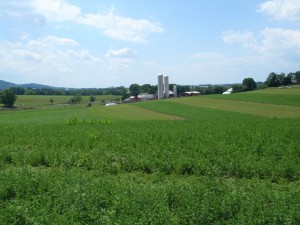
Lebanon County Pa. farms are part of the Phila. foodshed (FPR photo)
The Philadelphia region is surrounded by the nation’s leading farmland preservation programs in Pennsylvania, New Jersey, Delaware, and Maryland. It lies in a “golden crescent” where locally operated and funded programs sometimes double the funding power of state coffers and over the last 30 years have put about one million acres of farmland out of the reach of developers.
DVRPC examined about 50 other foodshed studies; few found were more than 10 years old. Among the earliest were a study conducted by the Sacramento Hunger Commission in 2000 and a plan developed by the Toronto Food Policy Council in 1999.
The Commission represents nine counties in Pa. and NJ and is the federally designated Metropolitan Planning Organization (MPO) for Greater Philadelphia. The 100-mile foodshed, however, stretches across 70 counties in five states including the planning area.
Last year the Commission published the Greater Philadelphia Food System Study, which examined the agricultural industry, food distribution network, food economics in the region and “social capital.” The recommendations released this month are an outgrowth of the study. Sustainable, environmentally sound agriculture that provides ample fresh foods to the urban population is the vision behind the study.
The study and the recommendations point up that while farmland preservation is receiving consistent political and funding support, ecological stewardship and conservation is lacking and water quality in the region is worsening.
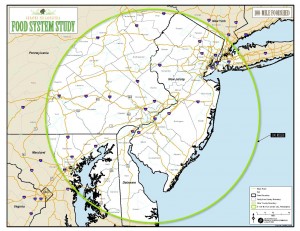
The 100-mile foodshed (graphic by DVRPC)
The state of agriculture in the region was measured in the study using USDA Census of Agriculture data for Land in Production in New Jersey and Pennsylvania only, from 1997 to 2007. New Jersey experienced a decline of 16.2 percent from 647,245 acres to 542,704 acres, and Pennsylvania saw a decline of 2.8 percent from 5,761,251 acres in 1997 to 5,602,562 acres in 2007. The nation as a whole saw a decrease of 3.4 percent in the period. Land in production is cropland and permanent pastureland. The figures are extrapolated from the USDA land in farms data. Cropland has declined sharply (20 percent in NJ and 10 percent in Pa.) while pastureland has increased in both states, seen at least partly as a shift from bean and grain crops to hay by retiring farmers.
The report also includes profitability data for New Jersey and Pennsylvania from the Census of Agriculture. The data depends of farmers reporting net losses and gains. Both states saw net losses in 2007 compared to 1997. In 1997 the two states combined reported 51 percent of farms showing net gains, but in 2007 that figure dropped to 42 percent. Increased expenses for fuel and feed were among the reasons for losses.
Farmers in New Jersey and Pennsylvania combined received $82.8 million in various types of agriculture support payments, about one percent of the national payout of nearly $8 billion.
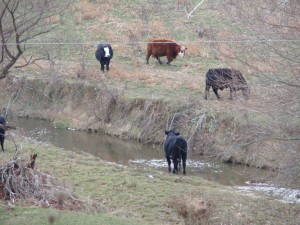
Water quality improvement lags behind farmland preservation successes, the plan states (FPR photo)
While productive land and profitability were used as indicators for farming and sustainable agriculture in the study, farmland preservation was used as an indicator of trends in ecological stewardship and conservation, along with surface water quality.
A top priority in the plan is farmland affordability. “Maintain affordable land for farmers through a range of potential innovations and new business models,” the recommendation states. “These include addressing the retirement needs of farmers, identifying opportunities to transition preserved land into food production, and creating investment vehicles for long-term agricultural production on preserved land.”
The Pa. Association for Sustainable Agriculture was awarded a $100,000 grant from DVRPC to expand on the state’s FarmLink Program by identifying tillable land available for lease. The “Farming Futures” initiative will work like an agent between landowners and farmers seeking to lease, and will sniff out idle lands that could be leased for crops. The offshoot is to use lease agreements as a form of equity that will help in attaining financing. The Farming Futures pilot will work in Bucks, Chester, Delaware and Montgomery Counties.
Grant funds were provided through the William Penn Foundation.
The W.K. Kellogg Foundation Food and Community Program last year identified a number of barriers to investing in and financing agricultural enterprises, including insufficient borrower capital or poor credit histories and difficulty in communicating production knowledge, management experience, and profitability potential. Additionally, farmers on leased land cannot use land as collateral. The Kellogg Foundation program recommended developing a scorecard or formula that could help determine profitability and manage risk.
Philadelphia Mayor Michael Nutter in 2008 said he was committed to making Philadelphia “the Greenest City in America” and sustainability was adopted as a fundamental approach for all of the city’s operations. Nutter’s food initiative, Philadelphia Food Charter, incorporates the development of a regional food system as a centerpiece, and calls for the use of city-owned land for urban agriculture. Greenworks Philadelphia, part of the Nutter plan, recommends 12 commercial agriculture projects be established in the city by 2015.
Agriculture’s leaders of the past
BY MIKE MCGRATH, Contributing Editor
 We stand on the verge of debating the next Farm Bill. It’s unclear to me where the leadership will come from to craft this next round of agricultural policy. With February upon us I thought now might be a good time to reflect on the history of America’s early national leaders and their views on agriculture. I thought I’d start with the two Presidents whose birthdays we celebrate this month. So, let’s take a look at our first President.
We stand on the verge of debating the next Farm Bill. It’s unclear to me where the leadership will come from to craft this next round of agricultural policy. With February upon us I thought now might be a good time to reflect on the history of America’s early national leaders and their views on agriculture. I thought I’d start with the two Presidents whose birthdays we celebrate this month. So, let’s take a look at our first President.
“I had rather be on my farm than be emperor of the world.”
“I know of no pursuit in which more real and important services can be rendered to any country than by improving its agriculture, its breed of useful animals, and other branches of a husbandman’s cares.” – George Washington
Washington was clearly a man who loved his farm and home at Mt. Vernon, Virginia. More than a few of his biographers are convinced he loved his farm, and farming, far more than being president! He had led a nation in wartime, at its founding. One could argue that the Revolution was mostly about commerce and agriculture. In fact, to a large degree, commerce and agriculture were one and the same in those days. At the beginning of our nation, America’s place in the world was based on our rapidly expanding agricultural productivity and trade. Our ability to freely trade those products and gain access to world finances based on our sale of agricultural products was the basis for our growth and prosperity. Washington, as evidenced by his second quote, was aware that agricultural improvements were, in fact, strategically important to his new nation. Are these facts so different from what we see in today’s world?
Today, in the midst of a world-wide economic malaise that continues to hobble the U.S. economy, agriculture has been a bright spot. Our balance of trade is defined by agricultural sales which offset declines in other sectors. But access to markets in Asia, and elsewhere, are still constrained by imbalances in tariffs and trading rules. Today, agriculture is one of America’s strategic strong points in international affairs. More than ever, agricultural technologies from the U.S. dominate world farming practices. But will the next Farm Bill recognize and capitalize on those advantages? Will our leaders recognize the importance of research and development, as Washington evidently did? Will we, for the first time, truly seize the opportunities to permanently preserve our inestimable reserves of prime working lands, farms and forests? Washington would urge us to do more than we have done – for the sake of our nation! Now, I turn to Abraham Lincoln.
“This leads to the further reflection, that no other human occupation opens so wide a field for the profitable and agreeable combination of labor with cultivated thought, as agriculture. I know of nothing so pleasant to the mind, as the discovery of anything which is at once new and valuable — nothing which so lightens and sweetens toil, as the hopeful pursuit of such discovery. And how vast, and how varied a field is agriculture, for such discovery. The mind, already trained to thought, in the country school, or higher school, cannot fail to find there an exhaustless source of profitable enjoyment.”
–Abraham Lincoln, Address before the Wisconsin State Agricultural Society, September 30, 1859
 Putting aside the language of the 19th century, Lincoln’s words sound so fresh and alive to me! Lincoln, the creator of the United States Department of Agriculture, the signer of the Homestead Act and the Morrill Act, was a man with a keen sense of the importance of taking the seemingly mundane in life and applying research, education, imagination – and making life easier and more fascinating and, yes, finding enjoyment! At the time of Lincoln’s speech agricultural societies all across the land were pushing for action by the Federal government in support of agriculture. They had been promoting research and discussion of the emerging scientific advances in farming. Lincoln, a consummate politician, seized the opportunity to trumpet their cause. With the politician’s eye he saw that this cause would also combine the interests of the toiling workman with those of the intellectuals and scientists, while providing for the needs of all citizens at lower cost. Now, there’s a cause worth running a campaign on! Is that not true today – even more than in Lincoln’s day? Americans in all walks of life are now asking where their food comes from, what is our diet doing for health and how are our farmers faring? Agricultural research goes begging while we are on the very verge of monumental advances that will feed more people, at lower costs, with less environmental damage, while improving the lot of farmers here, and around the world. Lincoln, I believe, would say, “Expand research and get our best – and most practical – minds to work on agriculture!”
Putting aside the language of the 19th century, Lincoln’s words sound so fresh and alive to me! Lincoln, the creator of the United States Department of Agriculture, the signer of the Homestead Act and the Morrill Act, was a man with a keen sense of the importance of taking the seemingly mundane in life and applying research, education, imagination – and making life easier and more fascinating and, yes, finding enjoyment! At the time of Lincoln’s speech agricultural societies all across the land were pushing for action by the Federal government in support of agriculture. They had been promoting research and discussion of the emerging scientific advances in farming. Lincoln, a consummate politician, seized the opportunity to trumpet their cause. With the politician’s eye he saw that this cause would also combine the interests of the toiling workman with those of the intellectuals and scientists, while providing for the needs of all citizens at lower cost. Now, there’s a cause worth running a campaign on! Is that not true today – even more than in Lincoln’s day? Americans in all walks of life are now asking where their food comes from, what is our diet doing for health and how are our farmers faring? Agricultural research goes begging while we are on the very verge of monumental advances that will feed more people, at lower costs, with less environmental damage, while improving the lot of farmers here, and around the world. Lincoln, I believe, would say, “Expand research and get our best – and most practical – minds to work on agriculture!”
The next Farm Bill is upon us. Where are our leaders who will speak for agriculture? Should not our nation’s chief politicians see agriculture as the next, great opportunity for America to lead the world – again? Will we protect our most important strategic resource – our working lands? When it comes to agriculture – are there any Washingtons or Lincolns to lead the way? I pray there are!
Mike McGrath leads the Delaware Agricultural Lands Preservation Foundation and is a member of the Philadelphia Society for Promoting Agriculture. Founded in 1785, it is the nation’s oldest agricultural society.
When 600 farm bankers meet ‘ex-hippie grocer’, now Whole Foods co-CEO
BY BOB HEUER, Contributing Editor
 OMAHA, NE – Whole Foods co-CEO Walter Robb says that consumers viewing farmers as “heroes” helps explain the “renaissance” in farm production supplying nearby markets. Robb—the product of the New Age alternative culture—was addressing the North American Agricultural Lenders Conference in Nov. in Omaha. Farm financiers tend to view farmers—at least the creditworthy ones that they loan money to—as businesspeople who know how to profitably supply global markets.
OMAHA, NE – Whole Foods co-CEO Walter Robb says that consumers viewing farmers as “heroes” helps explain the “renaissance” in farm production supplying nearby markets. Robb—the product of the New Age alternative culture—was addressing the North American Agricultural Lenders Conference in Nov. in Omaha. Farm financiers tend to view farmers—at least the creditworthy ones that they loan money to—as businesspeople who know how to profitably supply global markets.
California banker Curt Covington has a more nuanced view. As last year’s chairman of the American Bankers Association ag/rural lending committee, Covington decided that his peers need to hear the story of a 300-store, $9 billion national grocery chain that is so popular that it doesn’t advertise.
“Whole Foods has a simple economic model,” Covington says. “They cater to consumers who are willing to pay more to have confidence in the quality of a product. They rely on word-of-mouth marketing among a totally committed customer base that includes my wife.”
Covington heard Robb speak at the February 2010 USDA Ag Outlook forum and invited him to speak to the bankers meeting in Omaha. “I was terribly concerned about the skeptics,” he concedes. “I have a lot of friends from the Midwest, ag bankers who think you can afford to ignore the $25 billion a year organic and natural food retail industry.”
Covington is a Fresno, CA-based senior vice president at Bank of the West. Its $5 billion farm loan portfolio consists of 20 major production segments—including vegetables, table grapes, fruit trees, nuts and dairy. “California has so many crops that turn over so many times a year. Our business isn’t either conventional or organic. It’s becoming a side by side type of deal.”
He sees this shift in consumer preference colliding with the longstanding federal farm policy of encouraging the highest quality food at the cheapest price. “The growth of organics drives the regionalization of food production and USDA’s response through the Know Your Farmer, Know Your Food program,” Covington explains.
Covington knows it’s nonsense to think these changes are a passing fad, but he wasn’t about to present Whole Foods as the answer. “In the program brochure, we were careful to sell the sizzle, not the steak,” he says. “We didn’t say this is a business model that merits your attention. We said Walter Robb would bring a ‘different perspective as to how products are marketed to a sizeable portion of the U.S. consumer base.’”
Robb later called Covington to ask how bankers liked his presentation. “I told him that I’d heard he’d gotten the best rating of any of the speakers. And I said ‘don’t be surprised if you get invited back in five years to tell the story of how you managed to be so successful.”
Robert ‘Bob’ Heuer is an Illinois-based writer and marketing consultant in the area of food, farming and agriculture policy. He produces a free e-news service called Fork to Farm and is a contributing editor of Farmland Preservation Report.